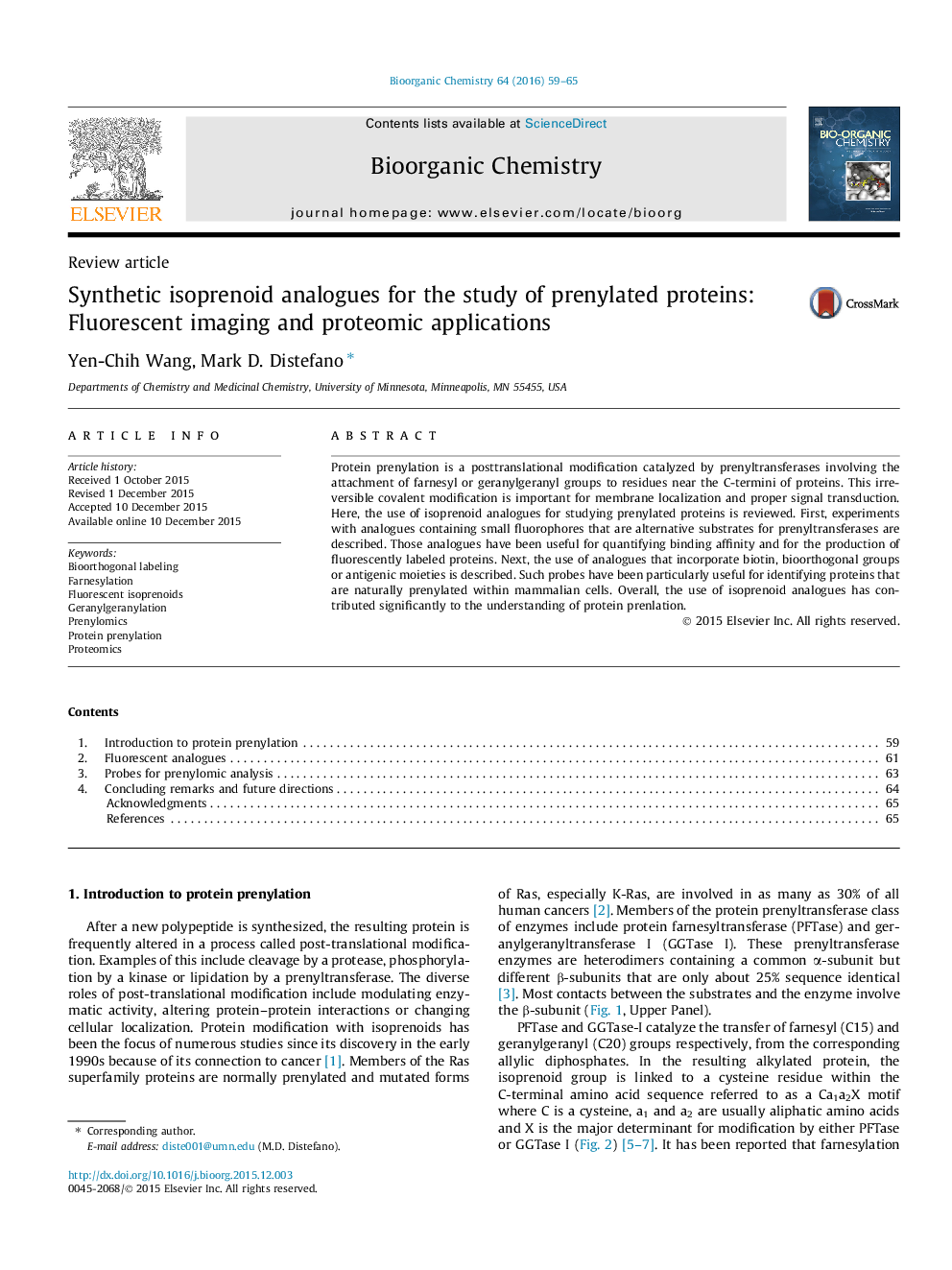| Article ID | Journal | Published Year | Pages | File Type |
|---|---|---|---|---|
| 1355592 | Bioorganic Chemistry | 2016 | 7 Pages |
•Protein prenylation is a common post-translational modification in eucaryotes.•Prenylation involves the addition of farnesyl (C15) and geranylgeranyl (C20) groups.•Fluorescent isoprenoids have facilitated the study of prenylating enzymes.•Isoprenoids containing bioorthogonal groups have been used to identify prenylated proteins.
Protein prenylation is a posttranslational modification catalyzed by prenyltransferases involving the attachment of farnesyl or geranylgeranyl groups to residues near the C-termini of proteins. This irreversible covalent modification is important for membrane localization and proper signal transduction. Here, the use of isoprenoid analogues for studying prenylated proteins is reviewed. First, experiments with analogues containing small fluorophores that are alternative substrates for prenyltransferases are described. Those analogues have been useful for quantifying binding affinity and for the production of fluorescently labeled proteins. Next, the use of analogues that incorporate biotin, bioorthogonal groups or antigenic moieties is described. Such probes have been particularly useful for identifying proteins that are naturally prenylated within mammalian cells. Overall, the use of isoprenoid analogues has contributed significantly to the understanding of protein prenlation.
Graphical abstractFigure optionsDownload full-size imageDownload as PowerPoint slide
